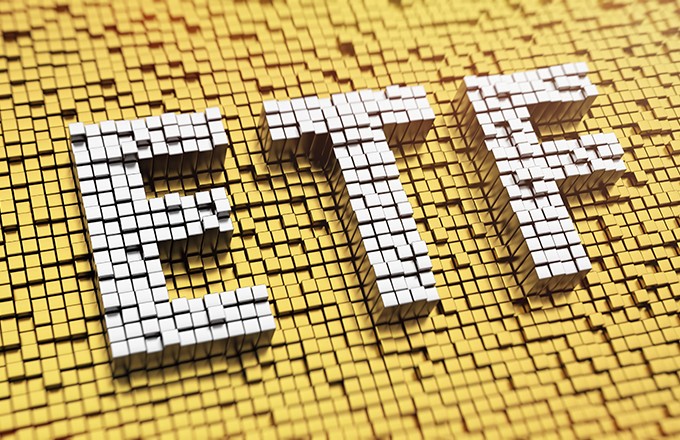Motif Investing vs ETF (SPY IWM QQQ BBH XLF XLE IYR TAN USO UNG GLD SLV)
Post on: 30 Июнь, 2015 No Comment

ETFs, or exchange traded funds. have been around for a number of years now and offer investors a flexible and cost effective alternative to mutual funds. Hundreds of ETFs are now offered enabling ownership of U.S. and foreign stock indexes, sectors of the economy, commodities or currencies, to name a few. Some leveraged ETFs even allow owners of shares to effectively be long or short an index, the return of which is multiplied by two, three, or more.
A new innovation for investors is so-called Motif investments. These are essentially customizable, personal portfolios of 20-30 individual stocks or ETFs that are bought and sold all at once for an all-in fee of $9.95 a basket. While there are many apparent similarities between ETFs and motif investments, there are also a number of important differences.
A Brief Overview of ETFs
ETFs are an excellent alternative to mutual funds for investors seeking diversification or exposure to specific sectors, countries, commodities and so on. A mutual fund’s value (as calculated using the NAV, or net asset value ) is typically only provided once a day, at the end of each trading day. In contrast, an ETF trades throughout the day, like a stock. Also like a stock, ETFs can be sold short or purchased using margin. ETFs do not have to maintain recordkeeping for shareholders, whereas mutual funds do. These expenses can be significant, especially if the fund has many small shareholders. Index mutual funds usually pay lower license fees than ETFs pay to Standard & Poor’s and other index providers.
ETFs are also more tax efficient than index mutual funds. Typically, when an investor wants to liquidate their ETF shares, they sell to another investor, which is not a taxable event for the ETF. In an index mutual fund, redemptions typically involve a sale of the underlying securities for cash, which is a taxable event that is passed on to shareholders of the fund.
Loading the player.
ETFs have been created to track popular stock indexes: SPY follows the S&P 500, QQQ follows the Nasdaq 100 and IWM follows the Russell 2000. Sector ETFs track economic sectors. For example, XLF is composed of financial stocks, XLE of energy stocks, TAN tracks the solar energy sector, BBH the biotech sector and IYR the real estate sector – just to name a small few. ETFs can be used to gain exposure to commodities: USO for crude oil, UNG for natural gas, SLV for silver and GLD for gold. There are also ETFs that track foreign indices and currencies, and leveraged ETFs multiply the returns of the underlying assets. (For more, see: Index Mutual Funds vs. Index ETFs . )
Motif Investments
A motif investment allows investors to choose from over 100 pre-built portfolios of 20-30 stocks, to customize existing motifs, or to create a brand new, unique portfolio all for a low execution cost of $9.95. The investor chooses the appropriate motif based on diversification and sector exposures and can tinker with weight allocations and portfolio composition before making a final decision. Once made, the owner of the motif can modify or rebalance the portfolio for a $9.95 commission or buy and sell individual securities within the motif for $4.95 per trade. The pre-built motifs are generally sector-based, theme-based, or goals-based. Motif portfolios may include ETFs as well as stocks.
On the surface, this sounds like a way to tailor make an ETF. But, when you invest in a motif, you actually buy and own the underlying shares of each security within it. With a motif, you always know exactly which individual exchange-listed securities are contained, and you can adjust and trade them however you like. In an ETF, a professional portfolio manager takes care of the day-to-day matters of the portfolio, and investors own shares of the ETF and not the underlying securities. As a result, while ETFs charge a management fee, motif investments do not. Essentially, the investor serves as his or her own portfolio manager.
The minimum investment in any motif is $250, which means that smaller investors are likely to own fractional shares of some companies. While fractional shares usually are paid dividends, they do not confer voting rights to the shareholder. (For more, see: How Motif Investments Work: Risks & Rewards . )
The Bottom Line
Motif investments are a new and inexpensive twist on customizing portfolios for diversification or to tailor specific exposures. While ETFs come in many shapes and sizes, ultimately, they are not customizable beyond the fund’s stated prospectus. Motifs are fully personalized and can even be built from scratch – all for one low commission. Motifs allow investors to actually own the shares in the portfolio and do not incur a management fee. Because ETFs are professionally managed, there may be increased risk for motif investors, who must act as their own portfolio managers.














